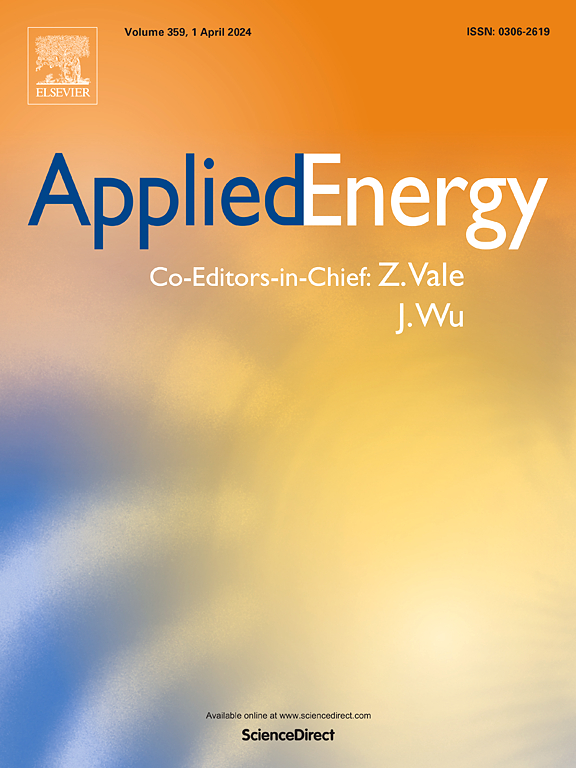PVMTF: End-to-end long-sequence time-series forecasting frameworks based on patch technique and information fusion coding for mid-term photovoltaic power forecasting
IF 10.1
1区 工程技术
Q1 ENERGY & FUELS
引用次数: 0
Abstract
Accurate photovoltaic power forecasting can alleviate the impact on grid stability. Most existing photovoltaic power prediction models rely on increasing model complexity or increasing the size of the look-back window to expand the amount of extracted information, but this often leads to catastrophic forgetting of learned information or the introduction of excessive redundant noise. In addition, some models predict by decomposing data and using non end-to-end learning, which may lead to inconsistent information and cumulative errors, limiting the improvement of prediction accuracy. To address the aforementioned challenges, we propose end-to-end PVMTF frameworks consisting of two models, PatchGRU and PatchGRU_h. This study is divided into two modules. In the data preprocessing module, we use Isolation Forest for outlier detection and replace outliers with window averages. Grey relational analysis is used for feature selection to reduce training complexity. In the photovoltaic power forecasting module, the PVMTF frameworks are used to directly achieve photovoltaic power forecasting. Firstly, based on the patch technique, the data is divided into independent short patches for separate learning, which can effectively preserve and learn historical information, avoiding catastrophic forgetting of important information that has already been learned as the look-back window grows. Specifically, for each patch, parameter sharing or independent parameter training Gated Recurrent Units (GRUs) are introduced to adapt to different computing needs, extract features within the patches, and achieve feature fusion. Next, a neural network-based gating mechanism is introduced to nonlinearly learn hidden states and fuse information. Finally, based on the above information fusion coding, accurate photovoltaic power forecasting is achieved by extracting the relationships between patches. Strict numerical verification indicates that PVMTF outperforms various state-of-the-art (SOTA) time series forecasting models in the three PV forecasting tasks (1-step, 384-step (4 days-ahead) and 672-step (7 days-ahead)), which provides an effective tool for PV power management and dispatch.
PVMTF:基于补丁技术和信息融合编码的端到端长序列时间序列光伏中期预测框架
准确的光伏发电功率预测可以减轻对电网稳定的影响。现有的光伏功率预测模型大多依靠增加模型复杂度或增加回看窗口的大小来扩大提取的信息量,但这往往会导致所学信息的灾难性遗忘或引入过多的冗余噪声。此外,一些模型通过分解数据和使用非端到端学习进行预测,可能导致信息不一致和累积误差,限制了预测精度的提高。为了应对上述挑战,我们提出了端到端的PVMTF框架,该框架由PatchGRU和PatchGRU_h两个模型组成。本研究分为两个模块。在数据预处理模块中,我们使用隔离森林进行离群点检测,并用窗口平均值代替离群点。采用灰色关联分析进行特征选择,降低训练复杂度。在光伏功率预测模块中,采用PVMTF框架直接实现光伏功率预测。首先,基于patch技术,将数据分割成独立的小块进行单独学习,可以有效地保存和学习历史信息,避免随着回看窗口的增长而灾难性地遗忘已经学习到的重要信息。具体来说,对于每个patch,引入参数共享或独立参数训练的门控循环单元(gru),以适应不同的计算需求,提取patch内的特征,实现特征融合。其次,引入基于神经网络的门控机制来非线性学习隐藏状态和融合信息。最后,在上述信息融合编码的基础上,通过提取贴片之间的关系,实现准确的光伏功率预测。严格的数值验证表明,PVMTF在1步、384步(提前4天)和672步(提前7天)3个PV预测任务中优于各种最先进(SOTA)时间序列预测模型,为PV功率管理和调度提供了有效的工具。
本文章由计算机程序翻译,如有差异,请以英文原文为准。
求助全文
约1分钟内获得全文
求助全文
来源期刊

Applied Energy
工程技术-工程:化工
CiteScore
21.20
自引率
10.70%
发文量
1830
审稿时长
41 days
期刊介绍:
Applied Energy serves as a platform for sharing innovations, research, development, and demonstrations in energy conversion, conservation, and sustainable energy systems. The journal covers topics such as optimal energy resource use, environmental pollutant mitigation, and energy process analysis. It welcomes original papers, review articles, technical notes, and letters to the editor. Authors are encouraged to submit manuscripts that bridge the gap between research, development, and implementation. The journal addresses a wide spectrum of topics, including fossil and renewable energy technologies, energy economics, and environmental impacts. Applied Energy also explores modeling and forecasting, conservation strategies, and the social and economic implications of energy policies, including climate change mitigation. It is complemented by the open-access journal Advances in Applied Energy.
 求助内容:
求助内容: 应助结果提醒方式:
应助结果提醒方式:


